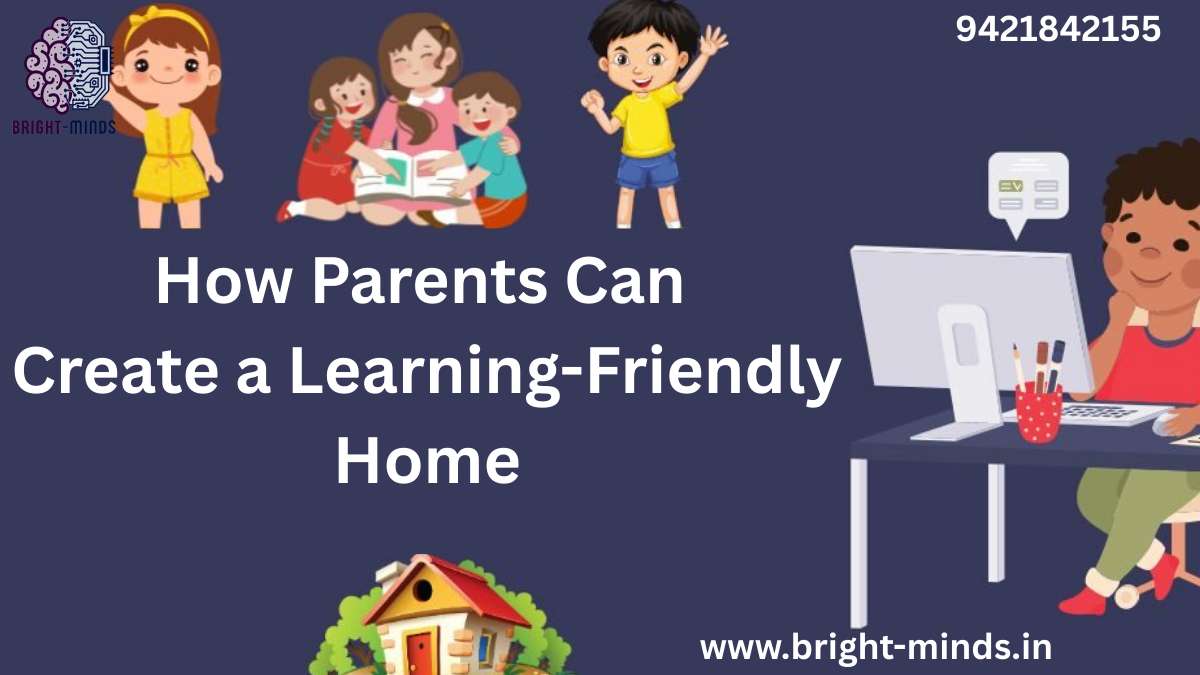In today’s fast-paced world, learning doesn’t just happen in classrooms anymore—it happens everywhere, especially at home. Whether you’re a parent, caregiver, or an employer looking to support working families, understanding how to create a learning-friendly home is essential.
More than just a quiet study space, a learning-friendly environment nurtures curiosity, independence, emotional intelligence, and the confidence kids need to thrive academically and beyond. And here’s the good news: you don’t need a big house or expensive tools to build one. All it takes is intention, structure, and a bit of creativity.
Let’s break down the why, what, and how of creating a home that sets kids up for lifelong learning and success.
🧠 Why It Matters: The Home as the First Learning Lab
Long before a child steps into a classroom, their brain is already forming 1 million neural connections per second. The home becomes their first school, and parents are their first teachers—whether they realize it or not.
But today’s kids face new challenges:
- Increased screen time
- Distractions from digital devices
- Reduced face-to-face interactions
- Lack of personalized support at school
This is why learning at home has never been more critical—or more possible.
According to a 2024 report by EdSurge, 82% of parents now engage in some form of learning support at home, ranging from reading time to educational apps. Even employers are stepping in, offering family wellness programs and digital learning resources to help employees support their children’s development.
📈 Market Trends & Industry Insights
The rise in remote and hybrid work models has made it easier—and more important—for parents to be active in their kids’ education. Meanwhile, the EdTech industry has exploded, offering affordable tools, online courses, and AI-powered learning apps to support at-home education.
Here are some notable shifts:
- EdTech investment in family-focused platforms rose 38% in 2024 alone.
- Workplace wellness programs are expanding to include parental support, educational stipends, and child learning workshops.
- Social-emotional learning (SEL) is a growing focus, showing parents the need to foster not just academic but emotional development at home.
The takeaway? Learning at home isn’t just a bonus—it’s a strategic advantage.
🏠 Key Elements of a Learning-Friendly Home
You don’t need to transform your living room into a classroom. Instead, focus on creating an environment that encourages curiosity, responsibility, and focus.
Here are the five essentials:
1. Dedicated Learning Space
Create a clutter-free, well-lit area just for learning—even a corner of a room will do. Personalize it with your child’s input so they feel ownership.
Pro tip: Add a whiteboard or chalkboard to let kids visualize their ideas. It sparks creativity!
2. Consistent Routine
Children thrive on routine. Set predictable times for homework, reading, breaks, and play. A reliable schedule reduces stress and increases focus.
3. Access to Resources
Keep age-appropriate books, art supplies, puzzles, and educational games within reach. Rotate materials to keep things fresh.
4. Limit Distractions
Create “device-free” zones during study hours. Use apps or timers to limit screen usage and keep attention focused on learning.
5. Positive Reinforcement
Celebrate progress, not perfection. Encourage effort, resilience, and curiosity. A growth mindset builds lifelong learners.
📚 Real-Life Example: One Family’s Transformation
Take Maria and James, both full-time professionals with two kids under 10. They noticed their children were struggling to stay engaged after school. Instead of overhauling their home, they made three small changes:
- Converted a corner of their dining room into a learning nook with a small desk and bookshelf
- Used a simple wall calendar to schedule 30 minutes of “learning time” after dinner
- Replaced one hour of screen time with storytelling or board games
The result? Their kids became more focused, curious, and confident learners—without any fancy tech or expensive programs.
💼 For Employers: Why This Matters to You
If you’re in HR or company leadership, you may wonder why any of this matters.
Here’s the connection: Employees who feel supported at home are more engaged, productive, and loyal at work. When companies offer learning support for employees’ families—like virtual tutoring, learning stipends, or parenting webinars—they create a ripple effect:
- Higher employee satisfaction
- Reduced stress and absenteeism
- Better work-life integration
Supporting home learning environments is no longer a perk—it’s part of future-ready workforce development.
💡 Practical Tips to Get Started Today
Here are five simple actions parents can take immediately:
- Schedule a daily “learning power hour” — a distraction-free time for reading, homework, or exploration.
- Ask open-ended questions — instead of “How was school?” try “What was the most interesting thing you learned today?”
- Involve kids in decisions — let them choose topics to explore, books to read, or projects to create.
- Model lifelong learning — show your own curiosity by reading, learning a skill, or discussing new ideas.
- Tap into digital tools — explore apps and websites that align with your child’s interests and age.
🚀 Final Thoughts: A Home That Builds Futures
Creating a learning-friendly home isn’t about having the best gadgets or the biggest budget. It’s about consistency, encouragement, and intentionality.
It might be helpful:

